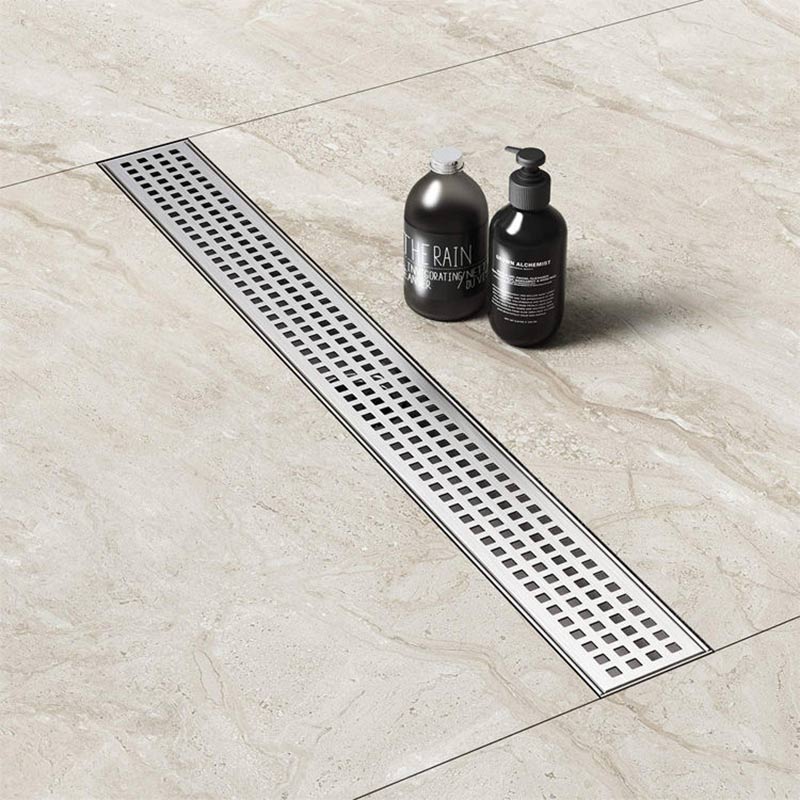Does Shower Drain Have To Be Centered?
The short answer is no, a Shower Drain is not required to be centered. While a centered drain is a common and traditional layout, it is not a universal building code requirement. The placement is primarily a functional decision based on the shower pan design and the slope of the floor, with aesthetic considerations playing a secondary role.
The fundamental requirement, as stipulated by plumbing codes (such as the International Plumbing Code IPC), is that the shower floor must be sloped a minimum of 1/4 inch per foot toward the drain to ensure all water effectively evacuates and does not pool. This critical requirement for proper drainage can be achieved with the drain in several positions.
Here are the common shower drain placements and their purposes:
1. Centered Drain
This is the standard for conventional square or rectangular shower floors.
Functionality: It is the most straightforward design for creating the necessary slope (often called a "traditional shower pan" or "single-slope pan"). The floor slopes evenly from all walls toward the center drain, which is simple to design and install.
Aesthetics: Provides a symmetrical, balanced look that is visually appealing to many homeowners.
Best for: Standard alcove showers and smaller shower stalls where symmetry is easy to achieve.
2. Off-Center Drain
This placement is often a practical solution for shower pans that are not perfectly square or are located in a corner.
Functionality: In a rectangular shower, centering the drain would require creating a steep slope from the long walls and a shallower slope from the short walls. An off-center drain, positioned along the centerline of the room but closer to one wall, can allow for a more uniform pitch across the entire floor. This can also be done to avoid floor joists or other structural obstacles during a renovation.
Aesthetics: The asymmetry is usually minimal and not very noticeable once the shower is completed.
3. Linear Drain
This is a modern and increasingly popular option that fundamentally changes the drainage strategy.
Functionality: A linear drain is a long, narrow channel typically installed along one wall of the shower. This allows the entire shower floor to be sloped in a single direction (a "single-plane" slope) from the opposite wall toward the drain. This can be much easier to tile, as it avoids the complex four-way slope of a centered drain.
Aesthetics: Offers a sleek, minimalist look. The drain becomes a distinct design element, and the single slope can make the shower appear larger.
Best for: Large, curbless (walk-in) showers and contemporary designs.
4. Wall Drain
Less common, but used in specific designs where a center or linear drain is not desirable.
Functionality: The drain is located directly against the shower wall. The floor is sloped from the opposite direction toward that wall. This is sometimes used in "wet room" configurations.
Considerations: Requires precise engineering to ensure water is captured effectively before it reaches other parts of the bathroom.
Key Factors Influencing Drain Placement:
Shower Pan Type: The choice between a pre-fabricated shower pan (which comes with a drain location predetermined by the manufacturer) and a custom-tiled shower pan (which offers full flexibility) is the biggest factor. You must follow the design of a pre-fab pan.
Plumbing Constraints: The location of the existing plumbing drainpipe (especially in renovation projects) can influence the final drain position, as moving it can be complex and costly.
Building Codes: While the drain's position may be flexible, the code's requirements for slope, pipe size, and waterproofing are not. The entire shower floor must be effectively waterproofed (with a shower liner or membrane system) that is sloped to the drain, regardless of its location.
Conclusion:
While centered is standard, shower drain placement is ultimately a decision based on design, functionality, and existing constraints. The paramount rule is that the floor must be correctly sloped to the drain to prevent water damage. For any custom shower design, especially one with an off-center or linear drain, it is highly recommended to work with a experienced plumbing professional and tile setter to ensure the installation meets all code requirements and performs flawlessly.
Previous: How Do I Clean A Shower Drain?




